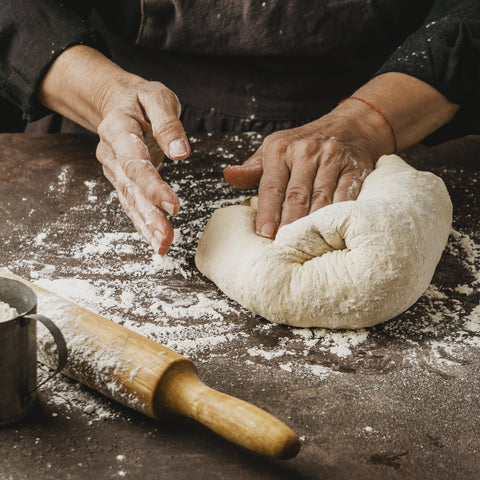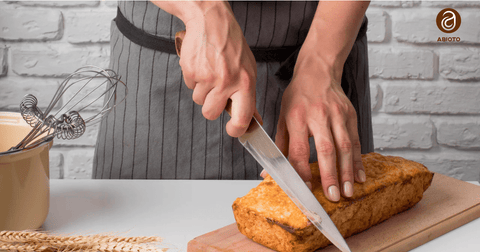If you’ve ever baked a loaf of bread from scratch, you already know that proofing is where the magic happens. It’s that quiet, patient stage where dough rises, builds flavor, and develops texture. But what many don’t realize is how much your proofing container affects the outcome.
A quick online search will flood you with options, from baskets to bowls to fancy gadgets, but which one truly delivers the best results? Whether you’re a sourdough lover, a weekend baker, or starting your first artisan loaf, choosing the best proofing bowl for bread makes all the difference.
In this guide, we’ll explore the types of proofing containers, break down their pros and cons, and help you find the perfect fit for your baking style. Let’s get into it.
Why Your Proofing Container Actually Matters?
It might seem like a simple step, just toss the dough in a bowl and wait, right? Not exactly.
Structure + Shape
A good container helps your dough hold its shape during the final rise. A poorly chosen bowl can lead to flat, spread-out loaves.
Moisture Control
Proofing isn’t just about rising, it’s about the environment. The right container maintains moisture without letting your dough get soggy or dry out.
Better Crust, Better Texture
The container you use directly influences how your crust develops and how much spring you get in the oven. A proper bread proofer or bowl encourages even fermentation.
Different Types of Proofing Containers for Bread
|
Container Type |
Pros |
Cons |
Best Use |
|
Banneton Basket |
- Holds shape well - Creates spiral texture - Allows airflow |
- Needs flouring - Can stick without a liner - Requires maintenance |
Ideal for artisan sourdough loaves and final proofing |
|
Plastic or Glass Bowl |
- Easy to clean - See-through for rise monitoring - Widely available |
- Doesn’t support shape - Can build condensation - Limited airflow |
Good for bulk fermentation and beginner-level proofing |
|
Dutch Oven (as a container) |
- No transfer needed - Retains moisture well - Bakes in the same vessel |
- Bulky in fridge - Limited to multiple loaves - Risk of overproofing |
Handy for small batches and minimal handling |
|
Colander with Cloth Liner |
- Budget-friendly - Maintains shape - Flexible sizes |
- Needs a well-floured towel - May leave cloth marks - Less airflow |
Great low-cost alternative for shaped proofing |
|
Bread Proofer (Box Style) |
- Controlled temperature - Ideal humidity - Consistent results |
- Higher upfront cost - Requires space |
Best for advanced bakers or those baking regularly |
What to Look for in the Best Proofing Container?
Let’s get practical. If you’re hunting for the best proofing bowl for bread, here’s what really matters.
Shape and Size
A round bowl is best for boules. Oval for bâtards. Whatever shape you choose, make sure there’s room for the dough to double in size, but not so much space that it spreads sideways.
Choose a proofing bowl for bread that fits your batch size. Too big, and your dough will flatten. Too small, and it will overflow or stick to the covering.
Material
Rattan baskets create a drier surface = better crust and scoring. Plastic or glass bowls are better for bulk fermentation. Ceramic is beautiful, but a little heavy.
If you’re starting out, a durable, reusable bread proofer with a liner might offer the best balance.
Surface & Stick Factor
Look for something that either naturally prevents sticking (like a well-seasoned banneton) or something you can line easily. Stickiness ruins the proof and kills the dough structure.
Bonus tip: light flour dusting + rice flour helps prevent sticking during final proof.
Easy Storage and Cleanup
If you bake often, you'll want a container that stores easily, wipes clean, and doesn’t take up your whole kitchen. Look for nesting proofing bowls or baskets with removable liners.
Best Practices for Proofing Dough
Having the right container is one thing, but here’s how to use it right.
Bulk Fermentation vs. Final Proof
Do your first rise (bulk fermentation) in a large bowl or tub. Then shape the dough and move it into a proofing bowl for bread or a basket for its final rise.
This second rise is where structure, surface tension, and dough height really matter, so the container plays a major role here.
Use Covers or Lids
Whether it’s a towel, shower cap, or plastic wrap, you need to cover the dough to prevent drying out. Most quality bread proofers come with fitted lids or covers, an underrated feature!
Proof at the Right Temperature
Most doughs love 75-80°F. Too cold = slow rise. Too hot = overproofed mess. Some advanced bakers use a bread proofer with a controlled environment to maintain ideal conditions.
Cold Proofing? Here’s What You Need
Planning an overnight proof in the fridge? Here’s how to choose a container that won’t ruin your dough.
Pick Something That Fits in Your Fridge
Large proofing baskets or deep bowls might not fit. Go with a shallower proofing bowl for bread or a container with a lid that seals in moisture during cold storage.
Avoid Sticking in Cold Environments
Cold dough can be sticky. Use rice flour, a liner, or parchment paper. If using a bread proofer, make sure it’s lined or lightly oiled to prevent dough from tearing during transfer.
What the Pros Use (And Why It Works)
Professional bakers often switch between different containers depending on the bread. Here’s a quick breakdown:
-
Plastic tubs for bulk proofing
-
Rattan bannetons for sourdough
-
Metal trays or couche cloths for baguettes
-
Custom proofing bowls for consistency and repeatable results
Using a combination setup, bread proofer for fermentation + proofing bowl for final rise, can give you the best of both worlds.
Try Abioto's Proofing Gear and Bake Like a Pro
Ready to level up your bread game? At Abioto, we’ve crafted tools with bakers in mind, from beginners to sourdough masters.
Explore our premium bread proofer and proofing bowl for bread, designed for better rises, fewer failures, and bakery-quality results at home.
Built tough, easy to clean, and made to give your dough the perfect environment every time.
Don’t settle for guesswork. Bake smarter. Bake with Abioto.
Choose the Right Tool, Get Better Bread
The truth is, bread baking is part science, part art, and the proofing container you use plays a big role in both. Whether you’re going for rustic sourdough or a soft sandwich loaf, choosing the best proofing bowl for bread makes the difference between “meh” and “wow.”
From structure and crust to rise and final shape, every part of your loaf is affected by what it’s proofed in. So skip the guesswork and grab tools that actually help your bread shine.
And if you’re ready to make better bread without the stress, Abioto has your back, with the kind of tools that make every step easier.
FAQs
1. Can I use any bowl for proofing bread?
Technically, yes, but not all bowls are created equal. A well-designed proofing bowl for bread offers structure, moisture control, and ease of handling that a basic mixing bowl can’t.
2. What size should a proofing container be?
It depends on your dough. Most home bakers do fine with a 9-10” round bowl or basket. Just make sure the dough can double in size without spilling over.
3. Do I need a separate container for bulk fermentation and final proof?
Yes, it’s best. Bulk ferment in a big container. Then shape the dough and place it into a proper bread proofer or proofing bowl for the final rise.
4. Can I proof in the fridge overnight?
Absolutely. Just use a covered bowl or lined basket that fits in your fridge. Cold proofing builds flavor and strengthens dough structure.
5. What if I don’t have a proofing basket?
You can line a regular bowl with a floured towel. It’s not perfect, but it works! Or check out Abioto’s beginner-friendly proofing bowl for bread to get started the right way.




Comments (0)
There are no comments for this article. Be the first one to leave a message!